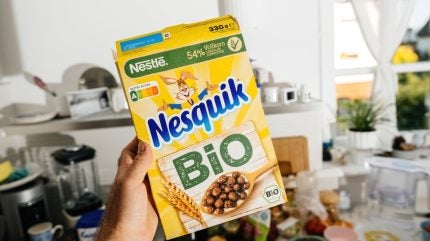
The convergence of health consciousness, environmental awareness, and consumer demand for transparency has dramatically reshaped the packaging industry.
As the world grapples with the repercussions of the Covid-19 pandemic and ongoing climate concerns, people have become more mindful of their choices.
This includes the food they eat, the products they use, and, crucially, how these goods are packaged. Health trends now drive the demand for packaging that is not only eco-friendly but also transparent in its content and purpose.
Clean label: What it means for packaging
The “clean label” movement, originally rooted in food production, is rapidly influencing packaging practices. Clean labels aim to assure consumers that products are free from artificial additives, preservatives, and synthetic ingredients.
This consumer-driven demand for simplicity and naturalness is transforming not only what goes inside the package but also how products are presented and packaged.
Consumers now seek clear, easily understandable labelling that highlights natural ingredients and provides information about sourcing and sustainability.
This transparency reassures buyers that the brands they support align with their personal values, particularly around health and environmental stewardship.
Packaging that clearly communicates these principles is becoming crucial for product success in markets where health consciousness is on the rise.
Health and eco-friendly packaging: A symbiotic relationship
Health trends often align with broader environmental concerns, fuelling the rise of “green” packaging solutions. Sustainable packaging, which uses materials that are recyclable, compostable, or made from renewable resources, is now seen as essential.
The health benefits associated with eco-friendly packaging are twofold: consumers believe that products packaged in sustainable materials are better for both personal health and the planet.
For instance, flexible packaging—adaptable and resource-efficient—has gained popularity for its minimal environmental footprint. Brands adopting such packaging can market not only the freshness and safety of their products but also their commitment to reducing waste.
This is particularly important as consumers grow increasingly aware of the environmental impact of plastic waste and excessive packaging.
Transparency: Meeting consumer expectations
Transparency has become a non-negotiable factor for consumers, particularly in the post-pandemic era. The pandemic intensified people’s focus on health, and with that came an increased desire for honesty and openness from brands.
Consumers want to know where their products come from, how they are made, and whether they meet ethical and environmental standards. Packaging plays a pivotal role in this process by acting as a medium through which brands can convey their values.
In response to this demand, brands are turning to innovations such as QR codes and blockchain technology to offer detailed information about product origins and supply chains.
This type of radical transparency fosters trust, providing consumers with real-time access to product data. The more transparent a brand is about its ingredients, sourcing, and production practices, the more likely it is to gain consumer loyalty.
The rise of plant-based and health-focused packaging
The growing demand for plant-based products is another trend driving changes in packaging. As plant-based diets gain popularity for their perceived health benefits and lower environmental impact, packaging must reflect this shift.
Packaging that promotes plant-based content often highlights its minimal processing and sustainable sourcing, reinforcing the idea of “clean” eating.
This trend extends beyond food to other sectors such as beauty and personal care, where consumers increasingly seek out clean, green products.
Brands are responding with packaging that uses natural, biodegradable materials and avoids chemicals or synthetics that could be harmful to health or the environment.
Packaging innovation for health-conscious consumers
The packaging industry is innovating to meet the rising health trends in multiple ways. Firstly, the design of packaging now prioritises reducing contamination risks.
For instance, resealable packaging is becoming more popular because it protects product integrity, ensuring freshness and reducing food waste, which consumers associate with better health.
Another trend is the use of smart packaging technologies that monitor the freshness of food or provide real-time data about the product’s condition. These technologies offer a layer of protection and assurance for health-conscious consumers, who are concerned about food safety and spoilage.
By integrating these features, brands can appeal to customers who prioritise health and wellness, while also reducing their environmental impact through more efficient use of materials.
Challenges in clean, green packaging
While the shift towards clean, green, and transparent packaging is largely positive, it comes with its own set of challenges.
One major issue is cost. Sustainable materials are often more expensive than traditional options, and clean label products may require additional investment in sourcing and production.
This cost can sometimes be passed on to the consumer, potentially limiting access for lower-income individuals.
Moreover, the industry still faces challenges around standardisation. The term “clean label” lacks a universally accepted definition, meaning different brands interpret it in varying ways.
As a result, consumers may still struggle to discern which products genuinely align with their health and environmental values. To address these concerns, regulatory bodies and industry leaders are working towards establishing clearer standards for what constitutes “clean” packaging.
The takeaway
The packaging landscape is undergoing a significant transformation, driven by consumer demand for healthier, more sustainable, and more transparent products.
As health trends continue to evolve, packaging must keep pace, balancing the need for environmental responsibility with the desire for safety and simplicity.
Brands that successfully navigate this dynamic environment—by adopting clean, green, and transparent packaging practices—are more likely to win the trust and loyalty of health-conscious consumers.
The future of packaging lies in its ability to communicate not just the quality of the product inside, but the values that drive its creation.




